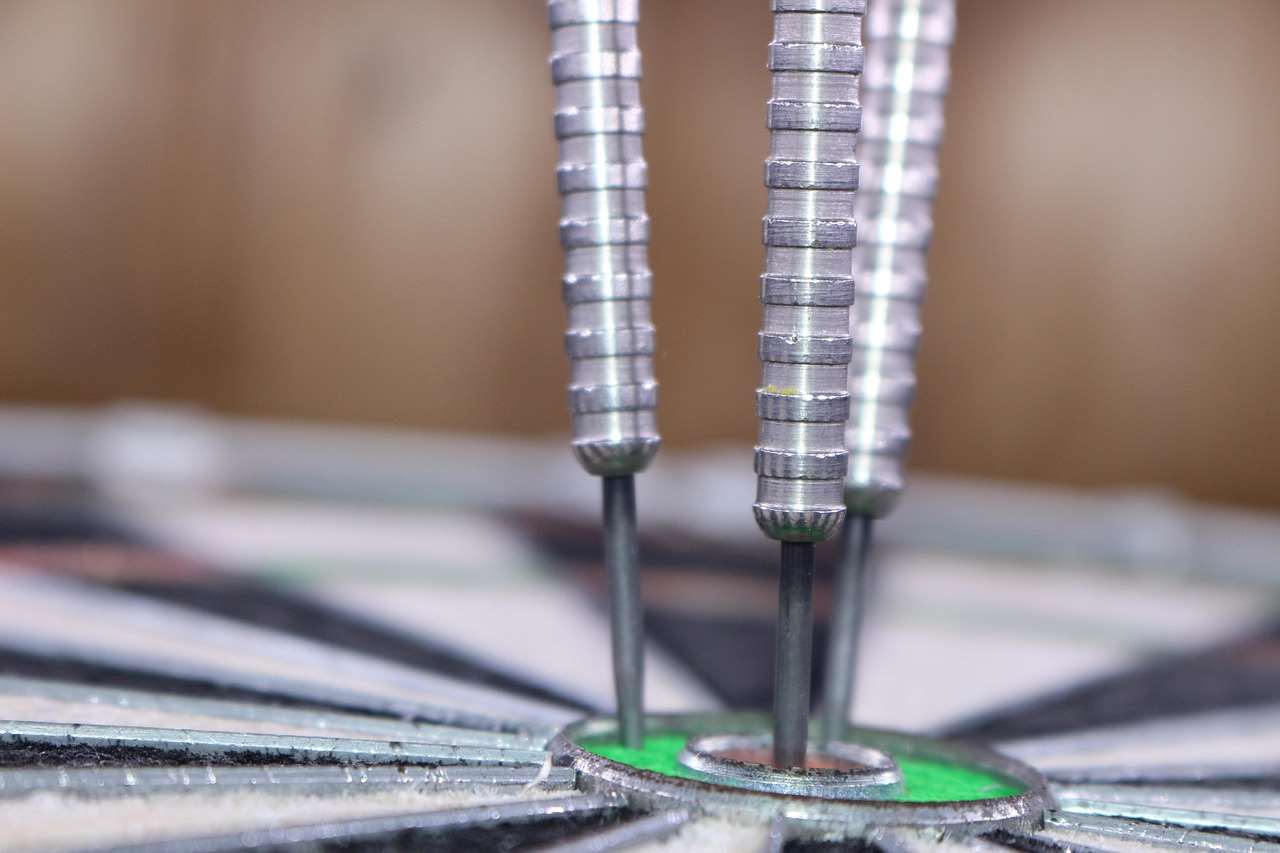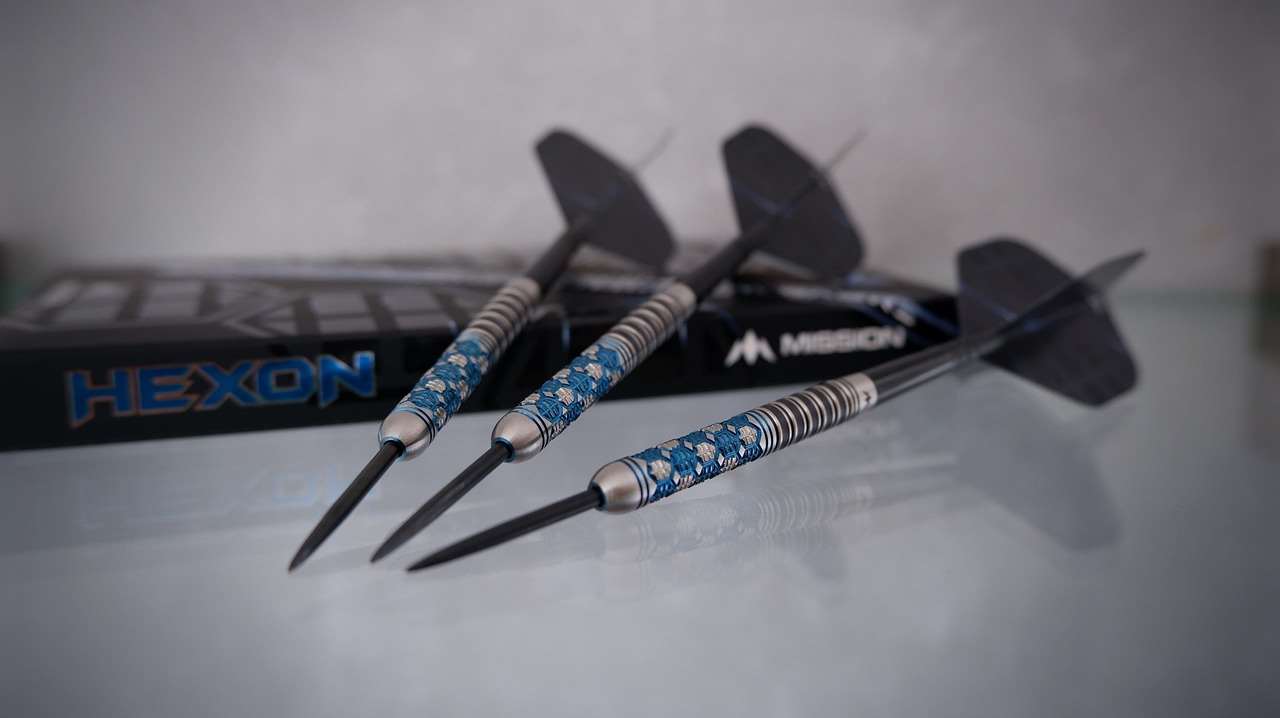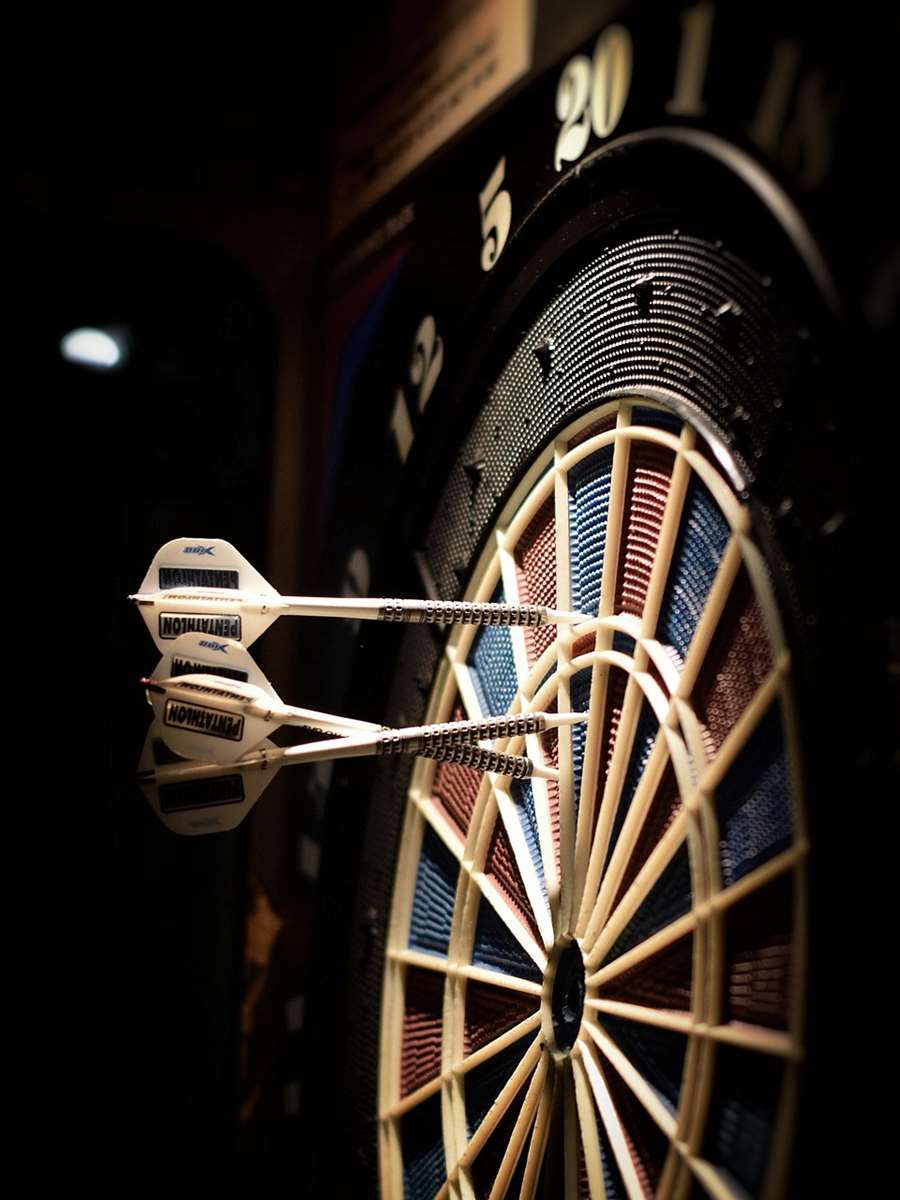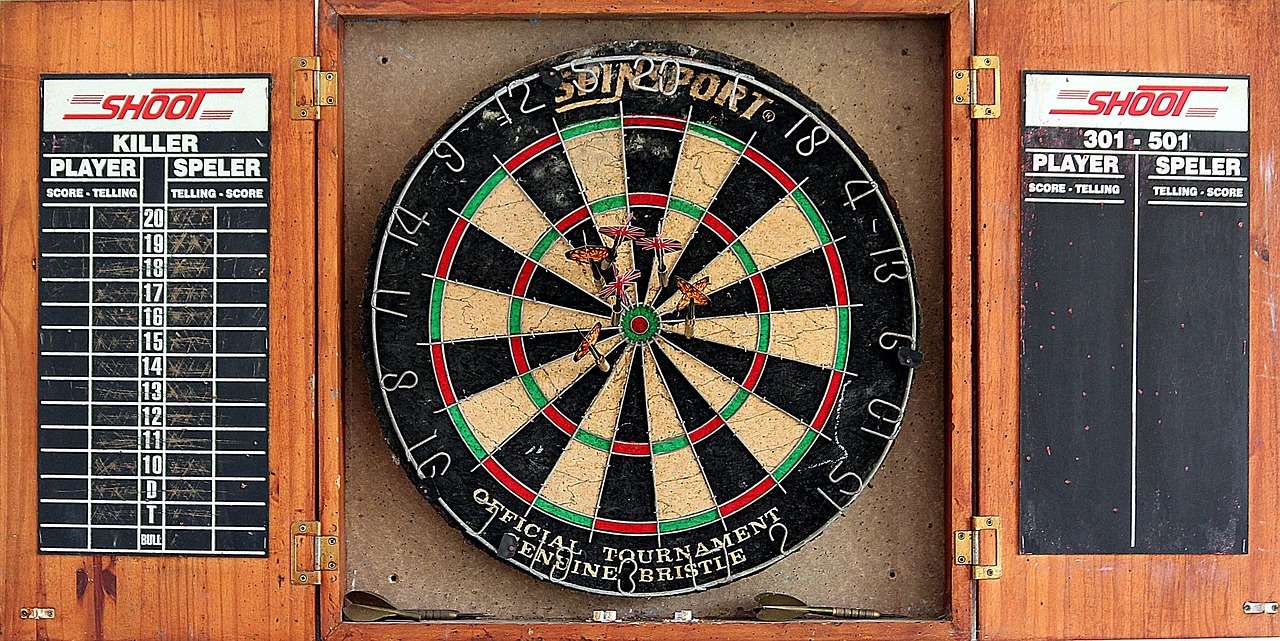Understanding **Oche regulations player safety** is paramount for a safe and enjoyable darts experience; adhering to standardized distances and implementing safety measures drastically reduces the risk of injury. This article will explore the official regulations surrounding the oche (throw line), crucial safety guidelines for players and spectators, and practical tips for setting up a safe dart playing environment.
⚠️ Still Using Pen & Paper (or a Chalkboard)?! ⚠️
Step into the future! The Dart Counter App handles all the scoring, suggests checkouts, and tracks your stats automatically. It's easier than you think!
Try the Smart Dart Counter App FREE!Ready for an upgrade? Click above!
Understanding Oche Regulations and Why They Matter
The oche, often referred to as the throw line, is the designated mark from which players must throw their darts. Its precise measurement and proper placement are essential not only for fair play but also for **player safety**. Inaccurate oche placement can lead to awkward throwing stances, increasing the risk of strains, sprains, and even more serious injuries over time. Consistent adherence to Oche regulations player safety ensures a level playing field and minimizes potential harm.
Official Oche Measurements
The internationally recognized distance from the front of the dartboard (the face of the board) to the **oche** is 7 feet 9 1/4 inches (2.37 meters). This measurement is crucial for competitive play and is generally recommended for recreational use as well. It’s important to measure this distance precisely, using a reliable tape measure, to ensure accuracy. Remember to measure from the *front* of the board, not the wall behind it. Incorrect measurement can significantly alter the throwing experience and increase the chances of injury. Understanding Basic Darts Fundamentals for Beginners is a key element.
Marking the Oche
The **oche** itself should be clearly marked on the floor. While there are no strict rules about the material used, it should be something easily visible and non-slip. Common materials include:
- Tape: Durable, non-slip tape is a popular and easily replaceable option.
- A Raised Strip: A thin, raised strip of wood or metal can provide a more permanent and tactile marker.
- Painted Line: A painted line is another permanent solution, but ensure it’s properly dried and non-slip.
Legal Stance Behind the Oche
Official regulations dictate that a player must stand behind the **oche** when throwing their darts. Players are allowed to lean over the oche but no part of their foot may pass over the edge closest to the dartboard during the act of throwing. This rule is in place to prevent players from gaining an unfair advantage by shortening the throwing distance. This rule is very important for adapting darts rules for beginners.

Player Safety: Essential Considerations
Beyond the oche, several factors contribute to **player safety** in darts. Creating a safe playing environment is crucial for preventing accidents and injuries. These considerations apply to both casual games and more serious competitions. Always prioritize safety to ensure everyone can enjoy the game without risk.
Dartboard Placement and Surround
The proper height for hanging a dartboard is such that the bullseye is 5 feet 8 inches (1.73 meters) from the floor. Ensuring the board is securely mounted to a wall is paramount to prevent it from falling and causing injury. Using a dartboard surround is highly recommended. A surround protects the surrounding wall from stray darts and, more importantly, reduces the risk of darts bouncing back and hitting players. This is a vital investment when considering **Oche regulations player safety**.
Lighting
Adequate lighting is crucial for clear visibility and accurate throws. Poor lighting can lead to eye strain, misjudged throws, and an increased risk of darts landing off-target. Ensure the dartboard is well-lit, ideally with lights positioned above or to the sides of the board to minimize shadows. Consider investing in a dedicated dartboard lighting system for optimal illumination.
Spectator Safety
Spectators should always stand well back from the throwing area and avoid distracting the players. Establish clear boundaries to prevent accidental collisions with players during their throws. A designated viewing area can help maintain a safe distance. Informing spectators about these safety guidelines helps everyone have fun and prevents unnecessary accidents. These spectator safety regulations must be considered along with Oche regulations player safety.
Dart Maintenance and Handling
Regularly inspect your darts for any signs of damage, such as loose flights, bent shafts, or blunted points. Damaged darts are more likely to bounce out of the board and can pose a safety hazard. Sharpen dart points periodically to improve their grip on the board and reduce bounce-outs. When not in use, store darts in a secure case or holder to prevent accidental pokes or injuries. This can be a great addition to creative dart rules for parties and social gatherings.
Appropriate Footwear
Players should wear appropriate footwear with good grip to prevent slipping while throwing. Avoid throwing in socks or bare feet, as this can increase the risk of losing balance and potentially injuring yourself. Sturdy shoes with rubber soles provide a more stable and secure base.

Common Safety Hazards and How to Avoid Them
Even with proper precautions, certain hazards can still arise during a game of darts. Being aware of these potential risks and taking steps to mitigate them is essential for ensuring **player safety**.
Bounce-Outs
Dart bounce-outs are a common occurrence, and they can be dangerous if not handled carefully. Always be aware of your surroundings and anticipate the possibility of a dart bouncing back towards you or other players. A dartboard surround significantly reduces the risk of bounce-outs and provides a protective barrier.
Distractions
Distractions can disrupt a player’s focus and increase the likelihood of misthrows. Minimize noise and movement in the throwing area and avoid engaging in conversations with players while they are preparing to throw. Encourage spectators to remain quiet and still during throws.
Intoxication
Playing darts while under the influence of alcohol or drugs can impair judgment, coordination, and reaction time, significantly increasing the risk of accidents and injuries. Avoid playing darts while intoxicated and encourage others to do the same.
Adapting Oche Regulations for Different Skill Levels
While standard **Oche regulations player safety** are suitable for experienced players, modifications may be necessary for beginners, children, or individuals with physical limitations. Adapting the rules and equipment can make the game more accessible and enjoyable for everyone while still prioritizing safety.
Shortened Oche Distance
For beginners or children, shortening the distance to the **oche** can make the game more manageable and less frustrating. Experiment with different distances until you find one that is comfortable and allows them to throw with reasonable accuracy. This consideration of **Oche regulations player safety** is essential. As their skills improve, you can gradually increase the distance to the standard measurement. This plays a key role when adapting dart game rules for children.
Soft-Tip Darts
Consider using soft-tip darts, especially for children or in environments where there is a higher risk of accidental pokes. Soft-tip darts are less likely to cause serious injury compared to steel-tip darts. These modifications ensure **player safety** without compromising the fun of the game.
Additional Safety Measures
When playing with children, consider implementing additional safety measures such as:
- Supervising children closely while they are playing.
- Ensuring children understand the rules of the game and the importance of safety.
- Providing a designated area for children to stand while others are throwing.

Oche Regulations Player Safety: Legal and Insurance Considerations
In commercial settings, such as pubs, bars, and arcades, adherence to **Oche regulations player safety** is not just a matter of best practice but also a legal and insurance requirement. Failure to provide a safe playing environment can result in liability claims and legal action in the event of an accident or injury.
Liability Insurance
Businesses that offer dart games should carry adequate liability insurance to protect themselves from potential claims arising from injuries sustained by players. The insurance policy should cover accidents related to dartboard setup, dart handling, and spectator safety.
Regular Inspections
Regularly inspect dartboards, surrounds, and oches to ensure they are in good condition and meet safety standards. Replace damaged or worn-out equipment promptly to minimize the risk of accidents. Document these inspections to demonstrate due diligence in maintaining a safe playing environment. This helps to follow Oche regulations player safety.
Warning Signs
Post clear warning signs in the dart playing area, reminding players of the rules of the game and the importance of safety. These signs should include information about proper dart handling, spectator behavior, and the potential risks associated with playing darts. This fits well with alternative darts rules for home play.

Conclusion: Prioritizing Safety for an Enjoyable Darting Experience
Adhering to **Oche regulations player safety** is paramount for creating a safe and enjoyable darts experience for everyone. By understanding and implementing the guidelines outlined in this article, you can minimize the risk of accidents and injuries and ensure that everyone can enjoy the game without worry. Remember to prioritize proper dartboard setup, adequate lighting, spectator safety, and responsible dart handling. Whether you’re a casual player or a seasoned professional, taking these precautions will contribute to a safer and more enjoyable darts experience. Now that you understand the rules, perhaps you would like to read about Simplified 501 game rules for novice players. So grab your darts, set up your board correctly, and have fun – safely!
Hi, I’m Dieter, and I created Dartcounter (Dartcounterapp.com). My motivation wasn’t being a darts expert – quite the opposite! When I first started playing, I loved the game but found keeping accurate scores and tracking stats difficult and distracting.
I figured I couldn’t be the only one struggling with this. So, I decided to build a solution: an easy-to-use application that everyone, no matter their experience level, could use to manage scoring effortlessly.
My goal for Dartcounter was simple: let the app handle the numbers – the scoring, the averages, the stats, even checkout suggestions – so players could focus purely on their throw and enjoying the game. It began as a way to solve my own beginner’s problem, and I’m thrilled it has grown into a helpful tool for the wider darts community.